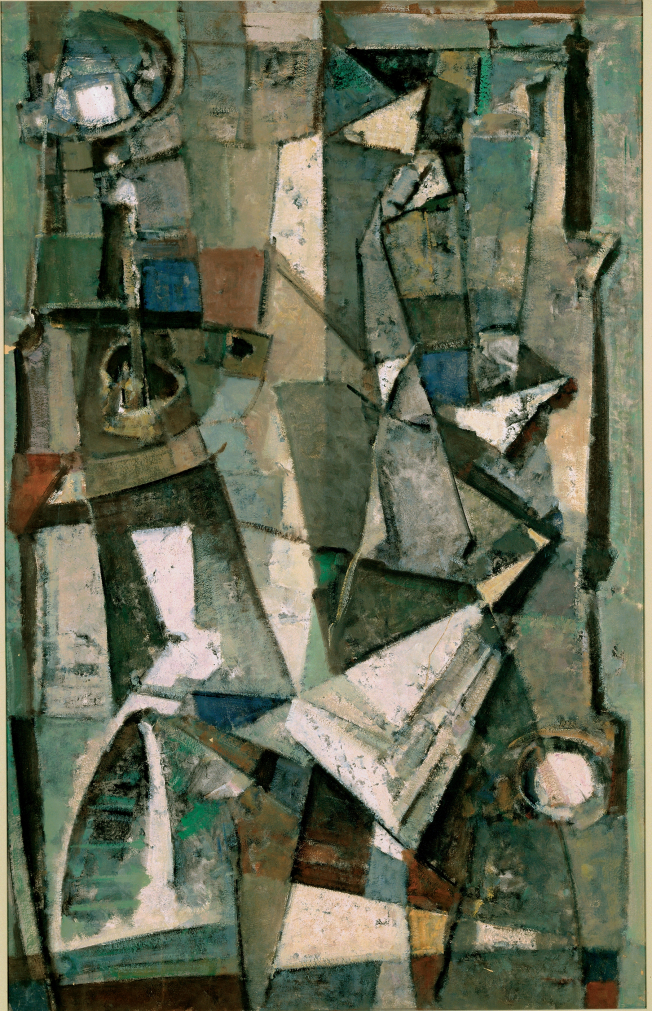Composition with hot colours I, 1956

Yannis Spyropoulos, one of the foremost exponents of abstraction in Greece, after studying at the School of Fine Arts in Athens (1933 - 1938), went to Paris, where he took lessons in painting at the École des Beaux Arts, and at independent academies. In spite of the fact that he had permanently settled in Greece, he was work became known and was honoured internationally. His first works were still lifes, landscapes, and portraits; he painted these without being committed to any specific style. The portrayal of nature, in particular, gave him the opportunity of studying the problems of space and composition which were of concern to him. His works were marked initially by a loose linkage of the planes by hovering motifs and a non-naturalistic rendering of colour with small vertical, bright brush-strokes. In the 1950s, nature was always the source of his inspiration. He conceived the picture and interpreted its features through an alternating game of bright and dark shades in which space loses its third dimension, and lines, points of colour, and geometrical planes make up his vision, which was increasingly expressed by abstraction, until he arrived at total abstraction in the early 1960s. His painting became increasingly an inner matter, while the positioning of colour in the work evolved into an existential event. From whites and bright colours he went over to earthy, dark ones, through which reds, ochres and whites rise up in a cosmogonic explosion, tearing apart the space in an eruption of powers of the soul and energy which is automatically passed on to the viewer. Collages, over-paintings, burns, cuts increase the tension and summon to recruitment all the powers of the psyche and the mind.

Composition with Warm Colours I, of 1956, is one of the earliest of the Spyropoulos's abstract works, in which the sense of nature is rendered through geometrical vision which fragments the surface of the work into geometrical patterns which enclose colour entities. The way in which the paint is applied, sometimes at tonal points, sometimes with translucency, and yet at other times as something more autonomous or intact, breaks down the severity of the geometrical layout, giving with the freedom of the gesture the measure of a domination over reason.



